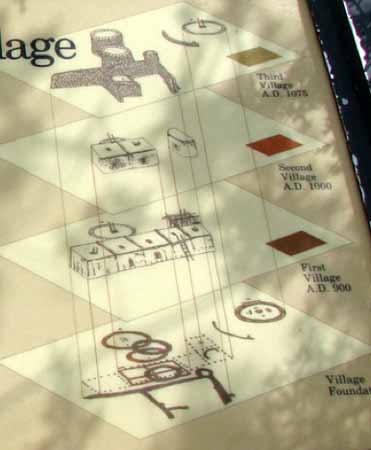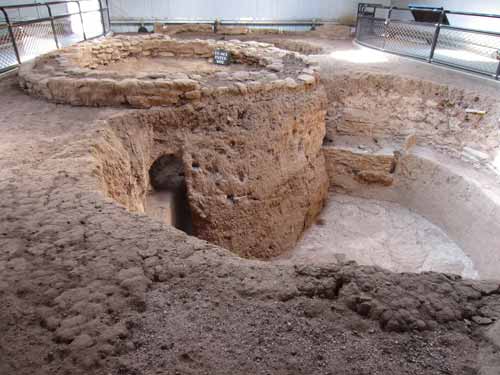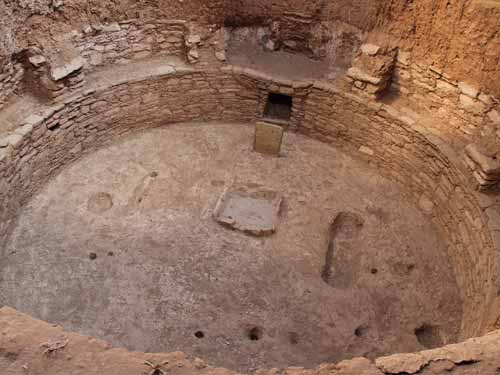Walking out to the sites, we noticed a very bizarre object. Upon closer inspection of both the object and the surrounding plants, it turned out to be a yucca fruit that had been pulled apart by a small animal.



The Pithouse: At first glance, this appeared to be the ruin of a typical pithouse, with a main room and antechamber. However, they are almost identical in layout. Further evidence reveals that the larger room had burned down. The smaller room is simply a rebuilding of the first one. With a fire pit only 6 feet below a ceiling of dry sticks and timber, pithouses must have been a dangerous place to live. A majority of them did burn down. Charred tree rings date the first pithouse at 674, but the second is still unclear, although most likely it was rebuilt shortly afterwards.




The Pueblos: This was the remains of an early pueblo village from around 950. It has stone walls. Just next to it are the ruins of a second village built 100 years earlier. It has the same layout but is made from jacal (upright poles with interwoven sticks, then filled in with mud).

The older pueblo

The basic layout of both villages

The newer stone pueblo from 950



By this time, pithouses had started to evolve into kivas, used was for formalized religious practices.

Inside a kiva
Mesa Top Sites: At first glance, this site is just a puzzle of circles. But upon closer inspection, it is actually three distinct villages, each with a different architectural style, that have been built upon one another for at least 150 years. The location wasn't that great: harsh weather, poor drainage, lingering snow. So perhaps they stayed here for tradition or family ties, or it may have been easy to just reuse materials from the old buildings.


The first village was from the year 900, followed by a second village of single-row masonry (one stone-row thick) in 1000. The third village, with double-row masonry was built in 1075.





The kivas also showed a progression in form and skill.
Sun Point Pueblo: This is all that remains of a medium-sized pueblo from the 1200's. The tower and kiva were completely surrounded by the rest of the village, unlike earlier villages which had an open courtyard. People only lived here for a short time before moving to the cliff alcoves. There isn't much left because it was probably used for building the new village.
Sun Point View: Within a short walk are 33 cliff dwellings that housed 600 - 800 people. Many of them are visible from this overlook. There was a very reliable spring at the head of the canyon (see, not a river). Of all 4,000 ruins within the park, only 600 are cliff dwellings (built and occupied between 1200 - 1300).

